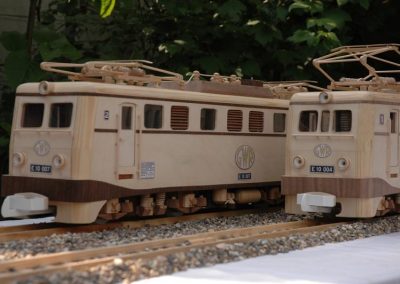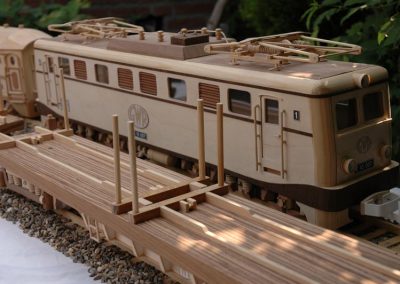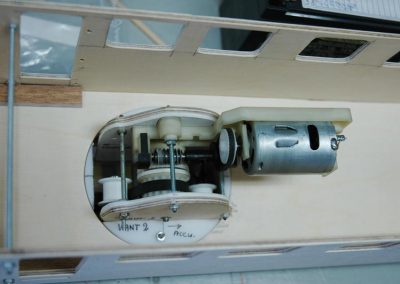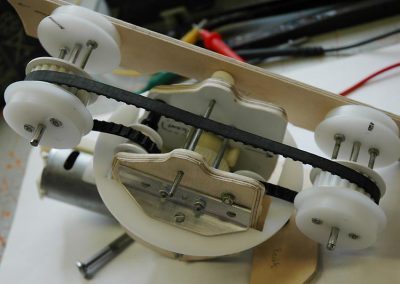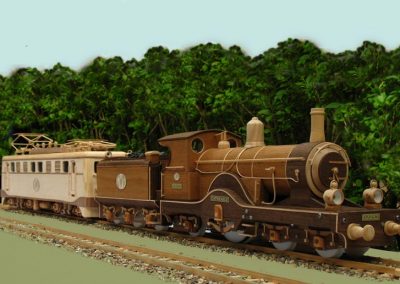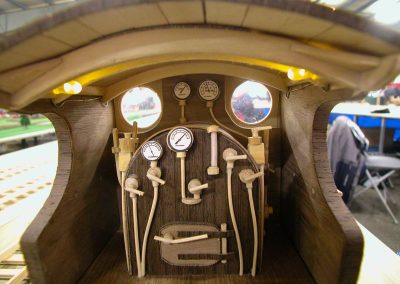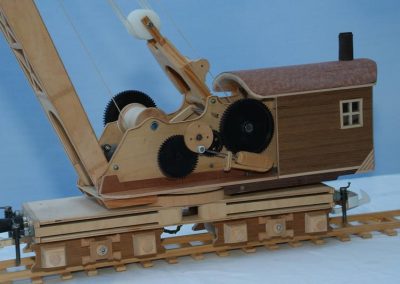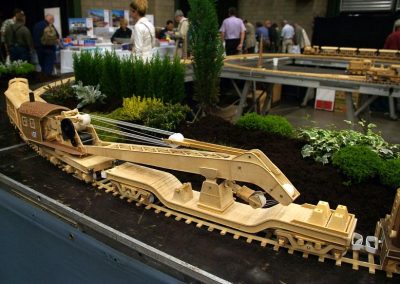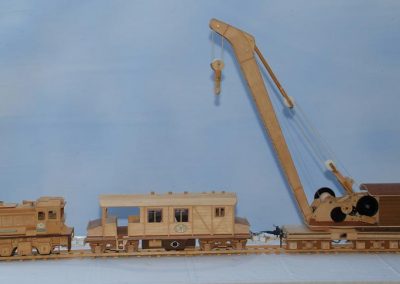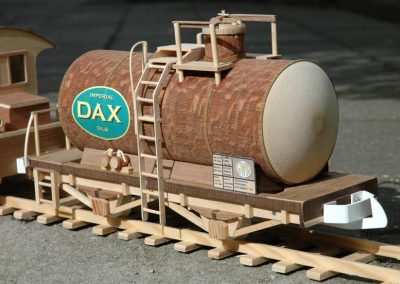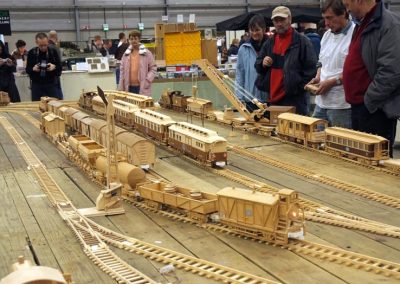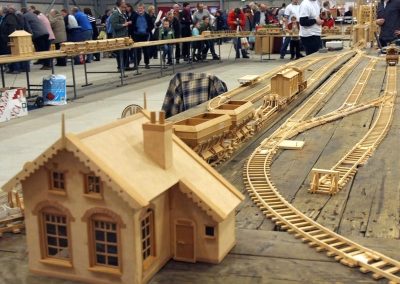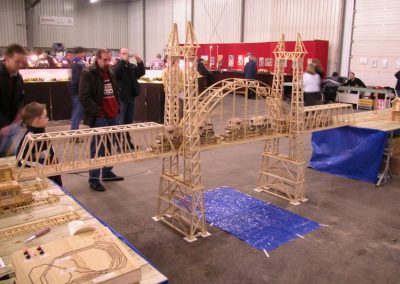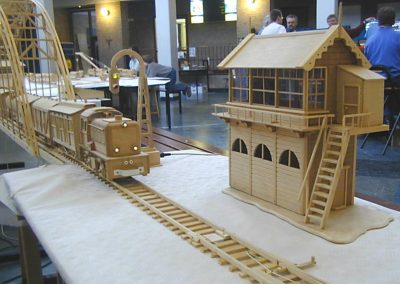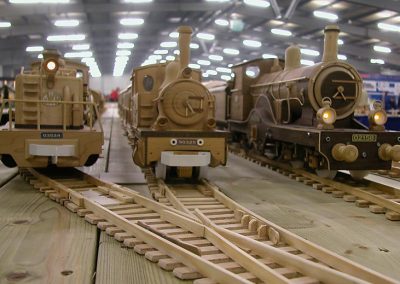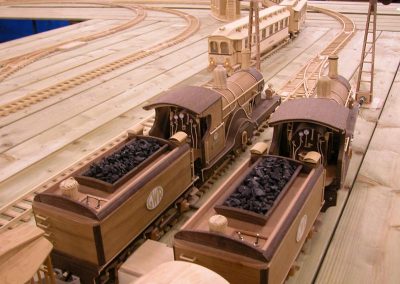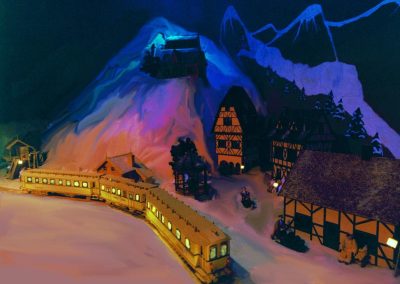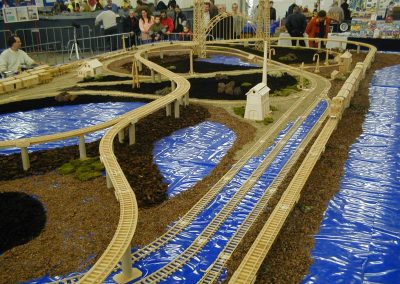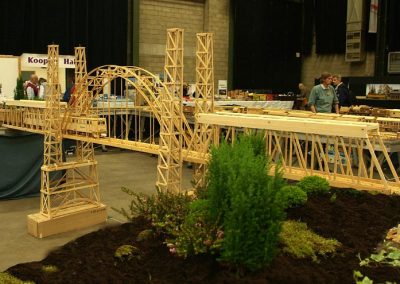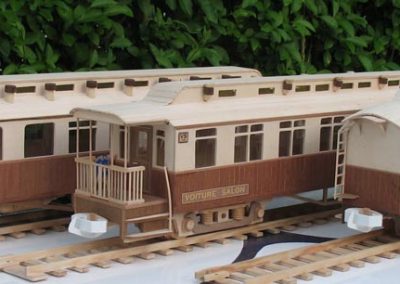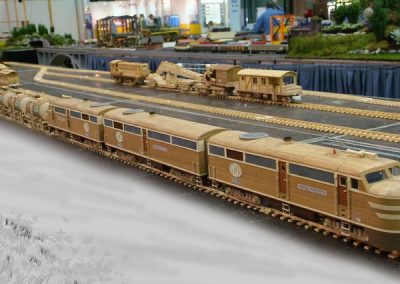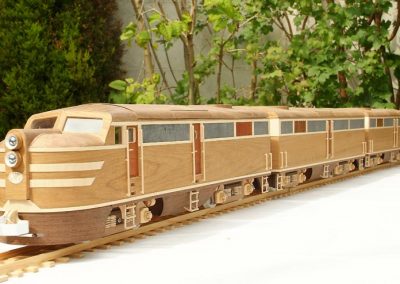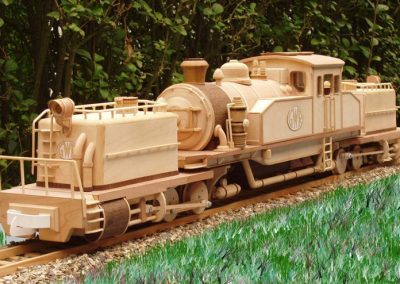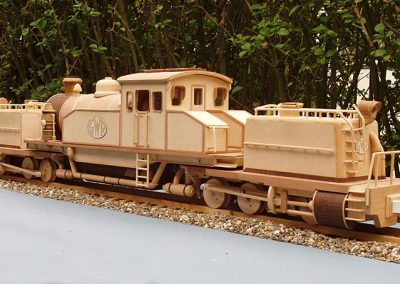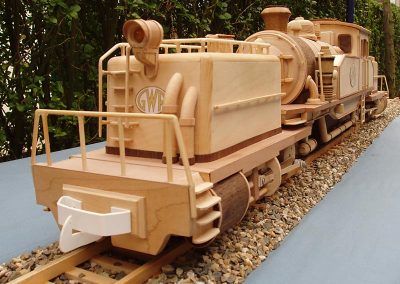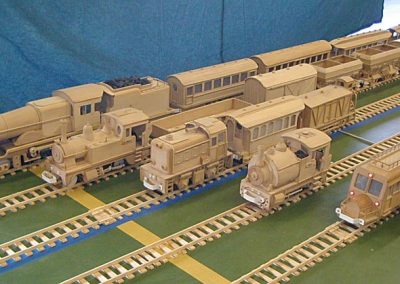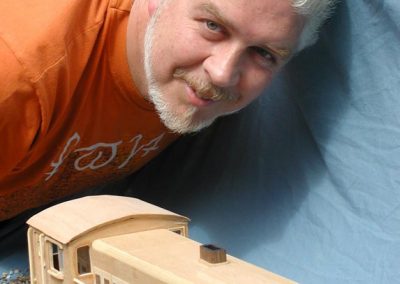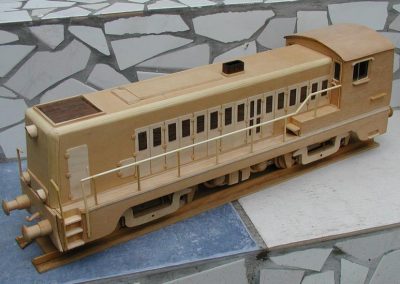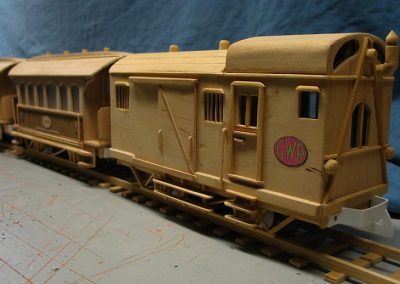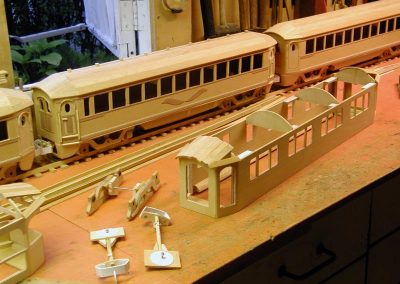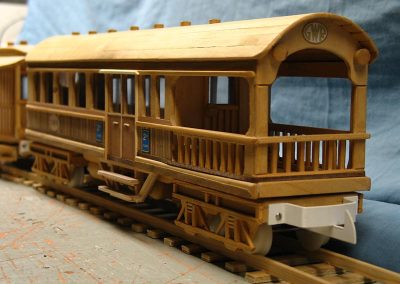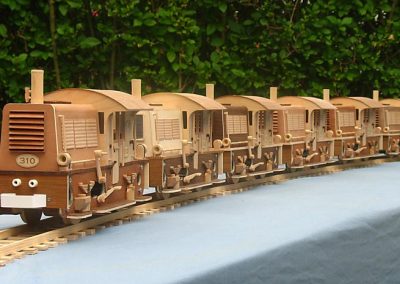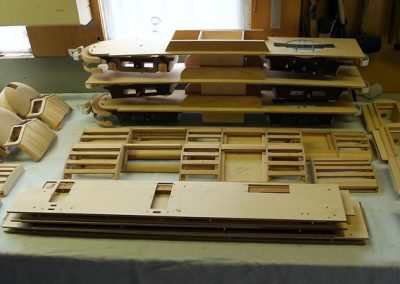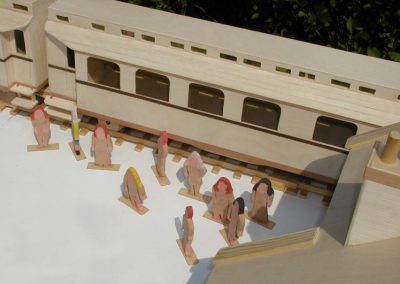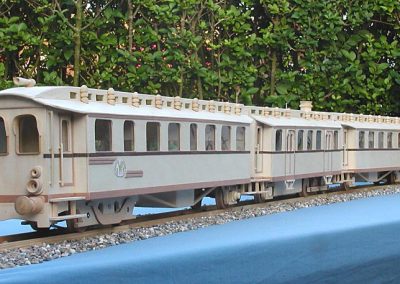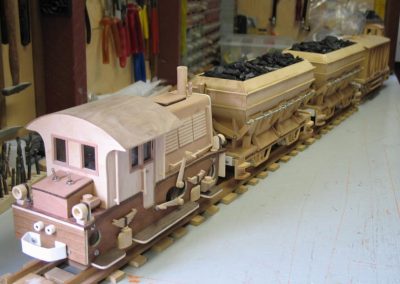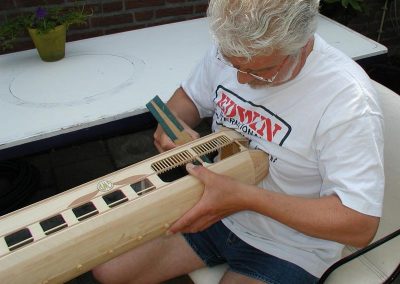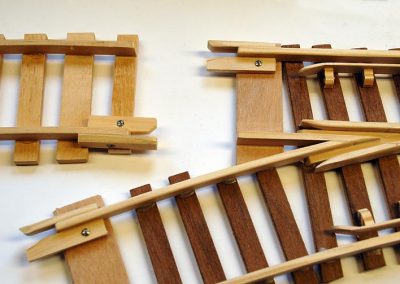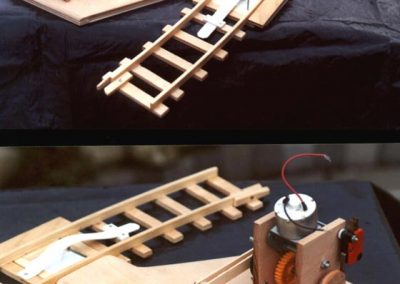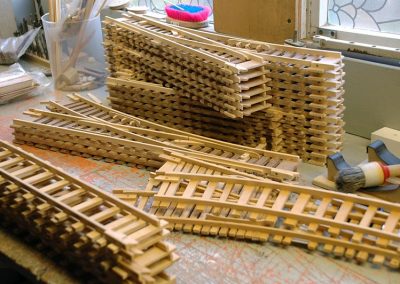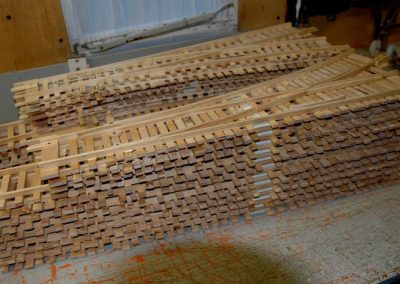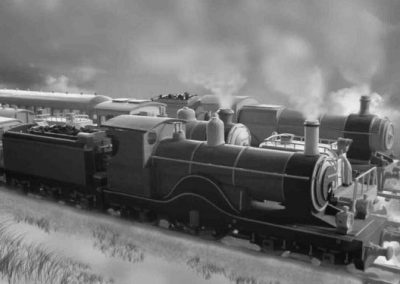Below you can view more photos of Roberto’s Great Wooden Railway. Click on images to enlarge.
Commuter Trains
The prototypes for these commuter trains were powered by overhead electrical wires. A catenary system on top of the cars extends upward to rub on the powered wires, although these are just for looks.
Crane Car
What railroad could get by without a crane car? It can be used for loading flatcars, or for righting derailed engines and cars.
Crane Car
In this photo, the crane car is secured in traveling position, with the boom down over a flatcar.
Train Consist
A train consist of two Alco Pa’s and a PB pulls a string of freight cars around the layout
Beyer-Garratt Locomotive
This loco type is known as a Beyer-Garratt. They were specially built for mountain travel where the track has many curves.
Beyer-Garratt Locomotive
These were among the strongest European locomotives ever built. This is because they consisted of two complete driven units connected to each other.
Beyer-Garratt Locomotive
The tanks on these units contained water, and the side tanks of the loco contained oil. This type of locomotive was used all over the world.
Various Trains
From railbuses to big steam, five tracks showcase the variety of engines that Roberto has added to the Great Wooden Railway over the years.
Roberto With a Locomotive
Roberto inspects one of his large Diesel locomotives, representing some of the more modern engines on his railway.
Conductor Car
This is a specific car in which the trainmaster (conductor) has their office. This car would usually be placed at the rear of the train, much like a caboose. The section of taller roof allows the conductor to see over the cars ahead.
Building a Passenger Car
The parts that make up a passenger car sit in the foreground, with a finished car behind them.
Passenger Car
The front third of this passenger car is open, with just a rail around it, for passengers on a low-speed excursion.
Wooden Figures
Several small wooden people, made on the bandsaw, add an element of life to the layout.
Passenger Unit
This is a model of a German passenger unit, consisting of one loco and two passenger cars. The loco is in the middle. This train was originally used from the 1920’s-1940’s by the Deutsche Reichsbahn. Initially, they got their power via an overhead electric catenary system. However, Roberto changed them into a Diesel-electric set. The original train was called an ET 87 (Electro Triebwagen Series 87).
Stopping Places
These are the stopping places that are positioned on the layout. When connected with a signal, they force the train to a halt, or let it depart. The plastic strip comes up and touches the microswitch under the locomotive. This switches the power off, and the train comes to a halt. When the plastic strip moves down, the microswitch connects the circuit again, and the train departs.

